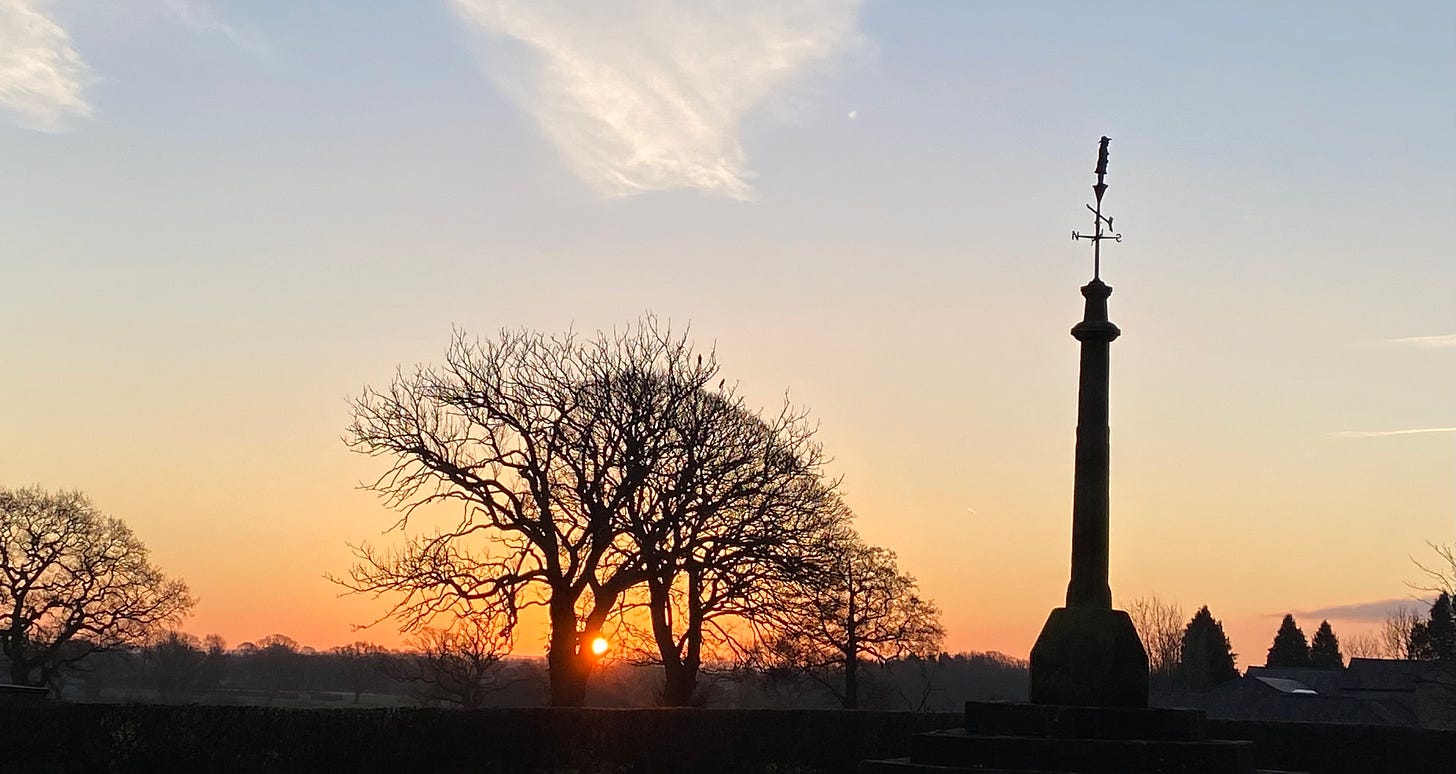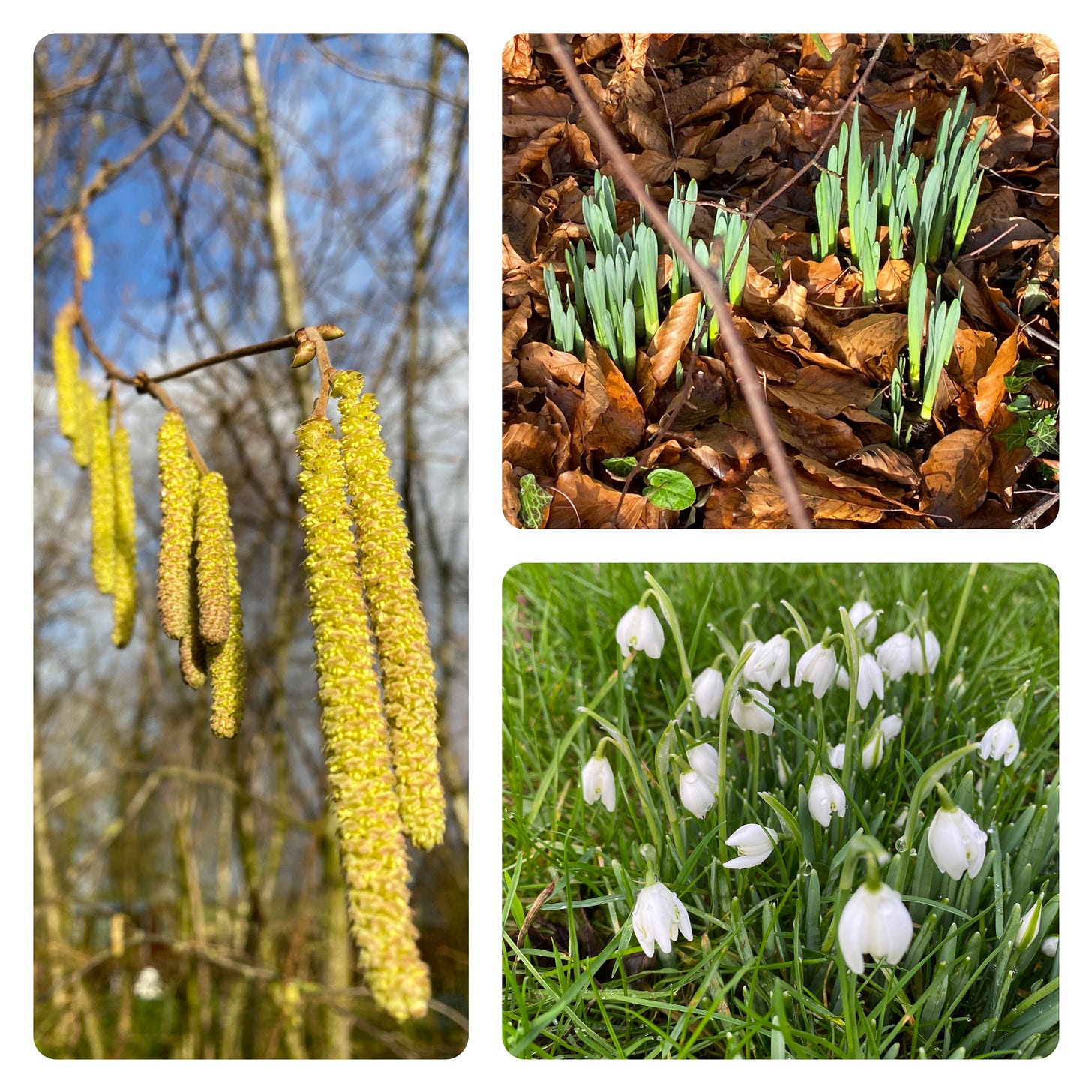Imbolc
Reflecting on Imbolc: its Relevance to Regenerative Sustainability
Welcome to Regen/Notes1 with a few thoughts reflecting on Imbolc and its relevance today in the context of regenerative and sustainability …
Imbolc is a seasonal festival celebrated on February 1st and marks the midpoint between the winter solstice and spring equinox. It is traditionally associated with the awakening of nature after the long, dark winter, and is a time to celebrate the coming of spring and new beginnings.
For sustainability and regenerative practitioners and organisations in the built environment, being aware of and aligned with the changing seasons is essential in fostering enhanced sustainability behaviours, stewardship, and reciprocity with the natural world. Not just for us who advocate, support, design, build, and manage the built environment, but also for those who live, work, and play in our buildings and facilities.
Understanding the natural patterns of the environment allows us to make informed decisions to support a sustainable built environment and create spaces that encourage positive environmental behaviours. By taking advantage of the resources each season has to offer, we can deepen appreciation for the delicate balance of the natural world and work towards better conserving it. Aligning with the changing seasons also promotes a sense of community and encourages individuals and organisations to come together to celebrate the changes and work towards a sustainable future.
Imbolc is associated with the goddess Brigid and is celebrated with rituals, feasts, and the lighting of candles to symbolise the increasing light and warmth of the sun. It is considered a time of purification and renewal and is still celebrated today by modern pagans and those interested in earth-based spirituality.
Imbolc’s focus on the renewal and awakening of nature, as well as its emphasis on purification and new beginnings, aligns well with the principles of sustainability and regenerative awareness. The festival celebrates the cyclical nature of the seasons and the regenerative capacity of the earth, emphasising the interconnectedness of all living things and the importance of preserving and replenishing the natural world.
These values are central to sustainable and regenerative practices, which aim to maintain the balance of the earth’s ecosystems and promote the health and well-being of the planet and all its inhabitants. Being aware of Imbolc can serve as a reminder of our obligations to the earth and encourage us to adopt more sustainable and regenerative practices .
As the daylight lengths increase, we hear the bird dawn chorus growing and seeds stir in the warming soil. Imbolc celebrates this natural processes of regeneration and growth, encouraging us to take care of ourselves and the earth. It is a time to set new intentions, in harmony with the earth, and to celebrate the cycle of life, death, and rebirth.
Snowdrops and bluebells
Primroses and daffodils
Will ring out loud bells
To welcome in the spring
Maggie Prior from 'Year' (1993)Let the Light In
Imbolc marks the gradual shift from winter to spring and the increasing power of the sun, with bird dawn chorus, seeds stirring in warming soil and signs of growth in the emergence of yellow and white flowers, such as aconites, hazel catkins, and snowdrops, which attract early pollinators.
It is also a time to nourish ourselves, in line with the earth’s renewal, it is a threshold and a time to make room for the new, open doors, for setting new intentions, and embrace change. Imbolc provides an opportunity to reflect on the ways in which we can contribute to a healthier and more regenerative future for planet and us.
The need for a thriving regenerative future, where natural resources are replenished and ecosystems are preserved, has never been more urgent. Awareness of seasonal markers like Imbolc can serve as a reminder of reciprocity, of our obligation to care for the earth, to promote and encourage more sustainable practices and to take action to protect and preserve it.
Whether through reducing our carbon footprint, supporting regenerative practices, or simply being mindful of the resources we consume, Imbolc encourages us to think about the ways in which we can be in service to the earth, rather than exploiting its resources … To work towards a future where the earth is healthy and thriving for generations to come.
Birth is here, it’s breaking out of death’s hour.
In fertile bulb and bud we see the promised flower
Deep in the circle of the sun’s power now returning
The heart is light, the step is bright in sunshine
Throw caution to the winds now that the weather’s fine.
Dance in the joy that is yours and mine
In Spring returning
"Birth" by Maggie Prior from Year (1993)Related Regen/Note
Lost Rain Forests and Joy of Birds: Unlocking the potential of Britain's lost rainforests: restoring carbon, biodiversity and health on our doorstep
Regen/Notes is a companion newsletter to the Zoom Regenerative series.
Previous articles on Regen/Notes can be explored here - and the best of 2022 can be read here- ENJOY.



